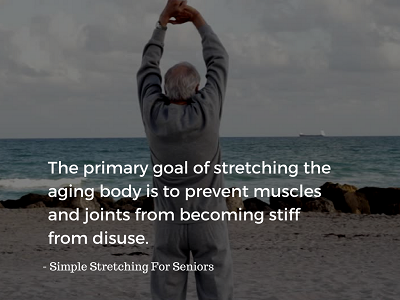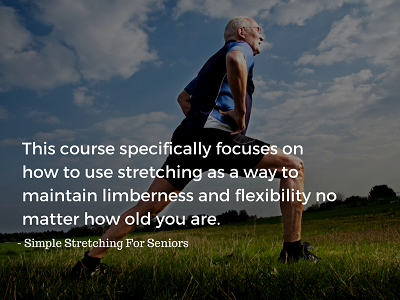Stretching for Seniors
 It may seem like stretching and flexibility is a straightforward thing… and to a large extent it is, when you’re young. However, as one ages, it’s more important to take necessary precautions when engaging in physical activities, including stretching.
It may seem like stretching and flexibility is a straightforward thing… and to a large extent it is, when you’re young. However, as one ages, it’s more important to take necessary precautions when engaging in physical activities, including stretching.
When you were young, if you felt a slight pain in your knee, you’d probably just throw a few kicks into the air and the problem would have resolved itself. Try that when you’re in your seventies and you might end up dislocating your hip.
You have no choice but to be more careful in your approach. Below you’ll find eight rules of stretching that you should abide by if you’re in your senior years. While they are applicable to any age, they’re more important when you’re older. Continue reading
 Any senior who is deciding to be proactive about stretching and increasing their flexibility is on the right track. However, before you start on your journey, it’s important to know where you currently stand.
Any senior who is deciding to be proactive about stretching and increasing their flexibility is on the right track. However, before you start on your journey, it’s important to know where you currently stand.
The only way to do that is to assess your level of flexibility before starting. This will not only give you an idea of how much progress you’ve made after a while, but you’ll also be aware of any limitation, weak spots or other issues that you should be aware of.
The first point to note is that generally, the older you are, the less flexible you’ll be. This is often the norm unless you’ve been engaging in regular yoga sessions throughout your life or you have a gymnastics training background and kept up with your flexibility training through the years.
Most seniors lead sedentary lives. So, it’s normal for one to be more rigid and inflexible due to age. Continue reading






